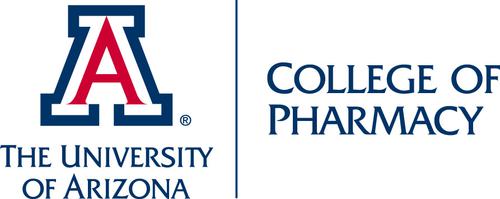Tucson, Phoenix Toxicologists To Assess Drugs
With the approval by the U.S. Food and Drug Administration on May 6 of a new antivenom to treat rattlesnake bites, the two poison control centers in Arizona are on track to begin research into the best utilization of snakebite medicines.
The FDA has approved the use of Anavip as a new rattlesnake antivenom. It will join the drug CroFab, which has been the sole antivenom available for purchase since 2000, as a medicine to treat patients who have been bitten by a rattlesnake.
Though Anavip will not be available for general use until October 2018, the Arizona Poison and Drug Information Center at the University of Arizona College of Pharmacy in Tucson and the Banner Poison and Drug Information Center at Banner-University Medical Center in Phoenix are developing a research study to help physicians determine the most efficacious use of the two antivenoms when both are on the market for hospitals to purchase.
The poison centers of Arizona were deeply involved in the testing that led to FDA approval of both antivenom products. CroFab was developed by faculty members at the University of Arizona and clinical trials were conducted in the 1990s at poison centers in Tucson and Phoenix. Several years later, both the Tucson and Phoenix poison centers were clinical trial sites in the study assessing Anavip, enrolling 25 percent of the patients studied before FDA approval.
“It is a natural progression of our research role for us now to study the best utilization of these medicines,” says Mazda Shirazi, medical director of the Tucson center. “This is the first time doctors treating snakebites will have two products to choose from. The antivenoms are similar in how they work, and both are effective. Now we need to find out the differences. Maybe we will learn that in some cases using the medicines together is the best treatment. We have a lot to learn about these drugs.”
Arizona is the ideal location to conduct this work.
“Arizona is home to 13 species of rattlesnakes and our poison centers help in the treatment of more than 200 bites a year,” says Steven Curry, MD, director of medical toxicology at Banner-University Medical Center Phoenix. “Physicians with our center treat between 55 and 80 patients annually and consult on many more cases. This will provide us a good base for research on how to best use the snake antivenoms. Our initial experience gained from using Anavip in the clinical trial resulting in FDA approval is that Anavip may have the advantage of lasting longer and preventing the need for repeated blood tests after hospital discharge.”
The Arizona poison centers are independently run public health services partially funded by the state. The Tucson center serves 14 of the state’s 15 counties, while the Phoenix center serves the state’s population center of Maricopa County. In 2013 they joined forces to work with the Center for Toxicology and Pharmacology Education and Research (CTPER). CTPER is located at the University of Arizona College of Medicine-Phoenix and provides expertise, education and research in the areas of medical toxicology, pharmacology, medication safety and disaster preparedness.
###
Poison Centers & Antivenom Research
The Arizona poison centers have been key players in the development of three antivenoms.
Snake antivenom
- CroFab – FDA approved in October 2000
In conjunction with the University of Arizona faculty members who developed the antivenom, poison centers in Tucson and Phoenix participated in trials needed for drug approval by enrolling and treating patients. - Anavip – FDA approved in May 2015
Both Arizona centers enrolled and helped treat patients in the nationwide study of a drug produced in Mexico. The study involved 18 sites and 123 patients. Together the Arizona centers accounted for about 24 percent of study participants.
Scorpion antivenom
- Anascorp – FDA approved in August 2011
The Tucson poison center began research for a scorpion antivenom in the early part of the 2000’s. The clinical trial was performed throughout Arizona and Nevada. The Phoenix poison center toxicologists treated almost 300 children in that trial.
Snakebite Facts
- Experts estimate there are 5,000 to 8,000 rattlesnake bites in the United States annually. The American Association of Poison Control Centers records more than 3,000 reported snakebites annually.
- More than 200 rattler bites are reported to Arizona poison centers annually. Not all of those who are bitten seek care. Experts estimate 250-350 bites in Arizona each year.
- The effects of a snake bite can include internal bleeding, severe breathing difficulties and permanent tissue and nerve damage.
- Though death is a rare outcome of rattlesnake bite, records show that one to 10 Americans die each year as a result of being bitten, and Arizona has the highest per capita death rate from snake bite.
- Medical care is the ONLY effective treatment for rattlesnake envenomation and usually includes treatment with antivenom. So-called “first aid” such as using tourniquets, snakebite kits, and suction to remove venom from the strike site are NOT effective and can cause more damage.
- Snakebites generally require hospitalization of three to five days to adequately treat the body’s initial responses to the venom.
- Treatment costs for snakebite may exceed $100,000.


